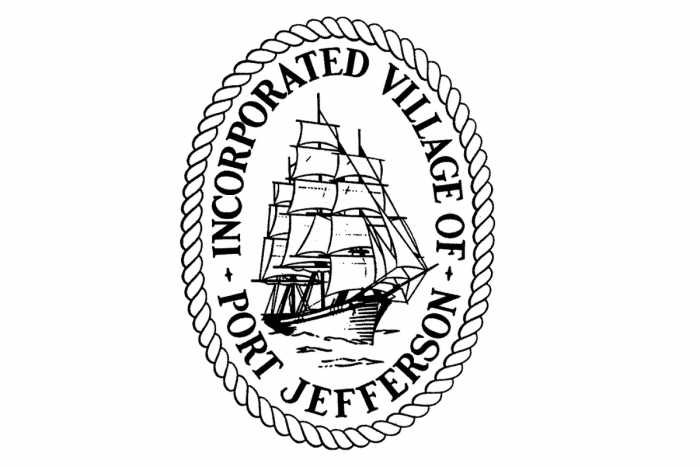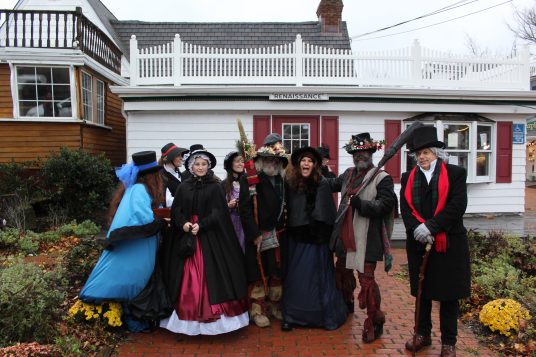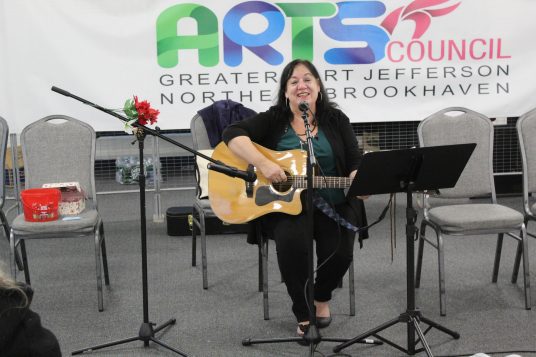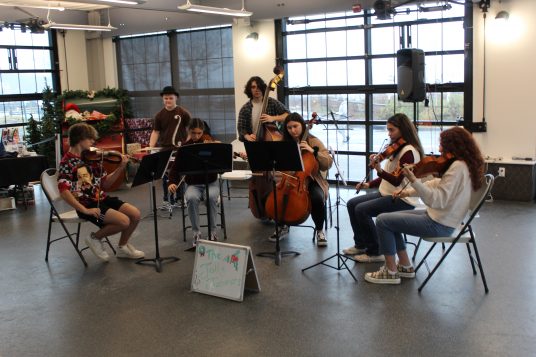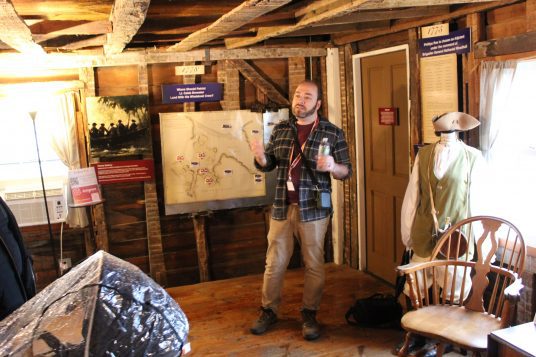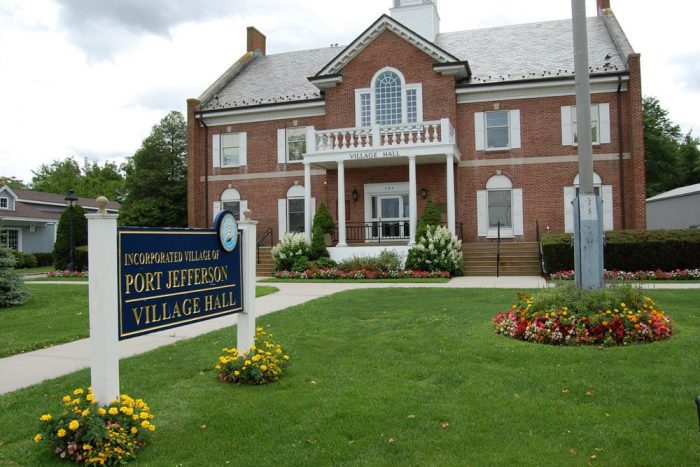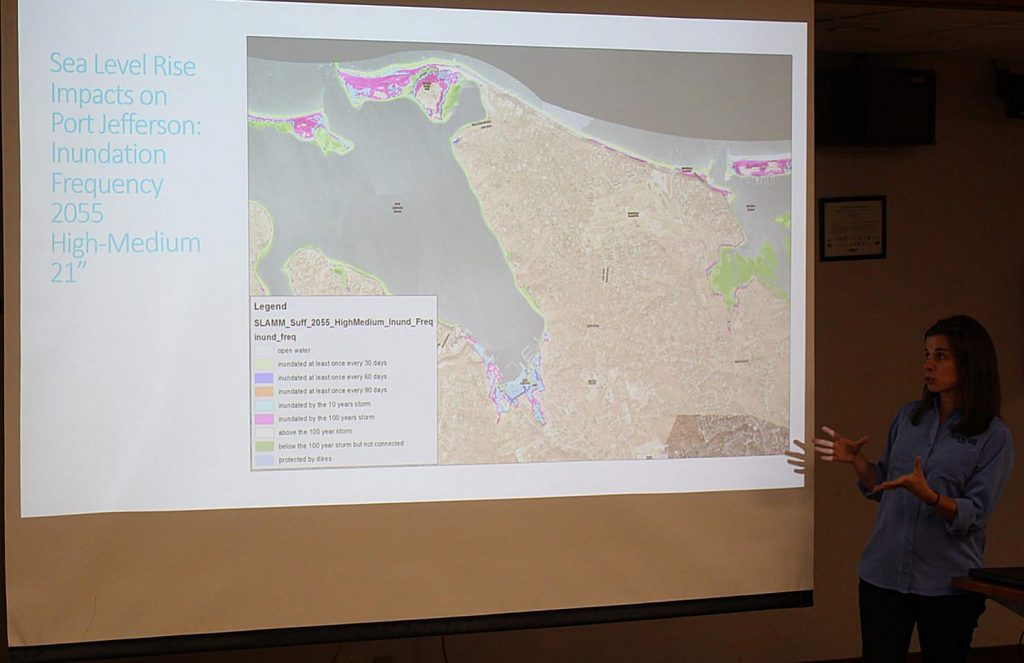The Village of Port Jefferson Village Board of Trustees met on Monday, Dec. 12, to review several important matters.
Mayor Margot Garant provided some key updates on the status of the stabilization projects at the East Beach bluff. At the toe of the bluff, the lower sea wall has already been installed along with its concrete cap. Construction will continue for several more months.
“That work will continue through the spring,” Garant said. “At some point, they will stop working during the severe winter, and in the springtime they will start to stabilize the bluff and plant and revegetate everything.”
At the upland, the village-owned Port Jefferson Country Club’s clubhouse facility hangs dangerously close to the bluff’s edge. In an exchange during the public comments, Garant stated the board is still exploring its upland options.
“We still don’t have enough information to decide to build [an upper wall], to put it out to the public [for referendum] or to decide to abandon [the clubhouse] and retreat,” she said. “We have decided to wait and let the phase I project be completed. … Right now, we are at a standstill with any major expenditures or advancements on phase II.”
Garant also gave an update on the status of the Port Jefferson Village Clean Solid Waste Landfill, a small kettle hole the village uses for branch and leaf pickup services. Though the village’s permit with the New York State Department of Environmental Conservation was set to expire on Dec. 11, the mayor said the agency would temporarily allow the village to continue its current use of the site.
“It looks like our paperwork was submitted in a timely manner to allow us to continue operations until we either have a renewed permit or we are redefined as a transfer station and not a landfill,” she said. For more on this intergovernmental permit dispute, see story, “Garbage grief: PJ Village and DEC clash over landfill permit.”
Garant thanked New York State Assemblyman Steve Englebright (D-Setauket) for his decades of representing the Port Jefferson community. Englebright will leave office at the end of the month after narrowly losing last month to Ed Flood (R-Port Jefferson) during the midterm election.
The mayor recognized Englebright’s lasting impact, noting “the many, many things that he’s accomplished for this community, locally and also regionally, and the stewardship he has taken in terms of environmental preservation and saving a lot of our history.”
Deputy Mayor Kathianne Snaden reported on some of the ongoing work within the Port Jefferson Planning Board regarding a proposed development by Conifer Realty located at the intersection of Main and Perry streets. This project, colloquially known as “Conifer II,” comes as Conifer’s Port Jefferson Crossing Apartments nears its grand opening.
Conifer II “is going to take the rest of the blighted block up there and turn it into a beautiful new building,” Snaden said. “We’ve been working very, very hard to make sure that the aesthetic of that building is in compliance with the whole plan, the master plan up there, with the current building that’s there, and everything works together and looks nice.”
The deputy mayor also announced an innovation concerning parking enforcement. An automatic license plate reader, or ALPR, attached to a code enforcement vehicle will soon replace parking enforcement operations. Snaden said the ALPR would assist the code department in generating overtime parking tickets on Main, with plans to move this technology into the metered parking lots.
“How that will affect you guys, the residents, is that there will be no parking stickers next year,” Snaden said. “You will go online and register the exact same way that you do. The only difference is that you will not be mailed an actual sticker. You will just be registered in the system by your license plate.”
Trustee Stan Loucks began his report by thanking the parks department staff, attributing much of the success of the village’s 26th annual Charles Dickens Festival to their efforts.
“The Dickens Festival turned out to be super successful, and I think a lot of it is due to the parks department and the hard work that they put in,” he said.
Trustee Lauren Sheprow, the village’s communications commissioner, reported on the recent formation of a communications team following an internal communications audit she conducted earlier this year. Kevin Wood heads the team, along with his duties as the village’s director of economic development and parking administrator.
Sheprow referred to this as “a historic occasion” for the village government. “There are some hurdles and challenges there, no doubt, but I think that this group is up to the task to come together as a team,” she said.
The village board will reconvene Tuesday, Jan. 3, at 5 p.m.

